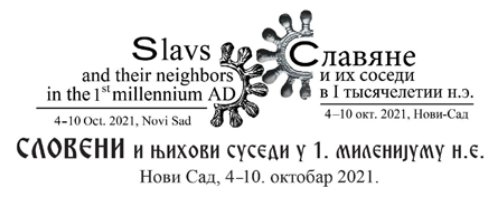Abstracts from the "Slavs and their neighbors in the 1 st millenium AD" conference.

Program and abstract book can be downloaded under this link . Some intriguing abstracts: Pins with eight-shaped movable links in the Middle Volga region in the 4th–7th centuries and their possible prototypes Lilia Khalimullina, Leonid Vyazov (Kazan, Russia) The sedentary population of the Middle Volga region during the Migration Period is represented by a number of closely connected groups, with the Imen’kovo culture and the Middle Volga variety of the Kiev culture (sites of the Sidelkino-Timyashevo type) as the largest ones. The issue of identifying specific elements that could be used as “ethnographic” features is of crucial importance for identifying the origins of their introduction to the region. Metal costume pins are among the few such examples. The earliest examples of pins in the Middle Volga region come from sites of the 3rd–4th centuries in the Cheremshan River basin where specimens with a loop-shaped head, with and without a round movable link were found. A separate eight-s
